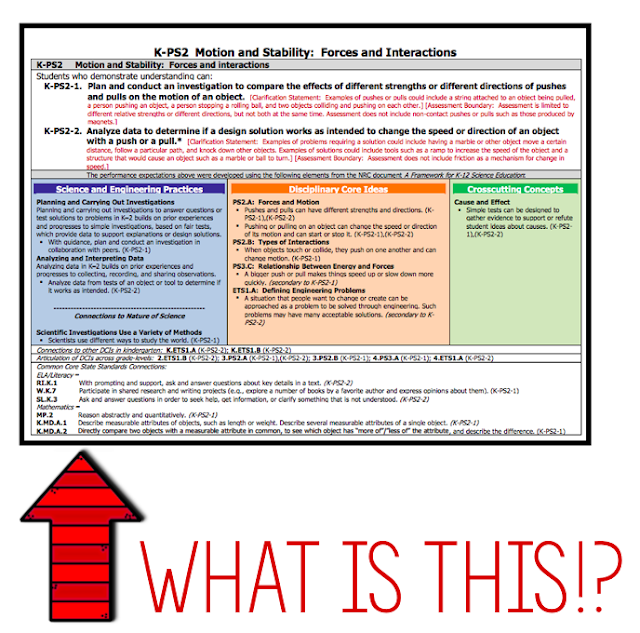Okay we have these new science standards, right? I am sure they are amazing and will transform my classroom. I am so excited to implement them into my classroom, however, HOW DO I READ THEM!? We are all saying this right??
My best teaching partner (Tess Dawson) and I were lucky enough to be able to present at a local PD. We were asked to break down the standards and all of the mumbojombo to get down to the nitty gritty. These steps should help you understand what the standards are expecting you to do along with give you FREE resources.
Tess found this AMAZING quote by Alison Gopnik, who is a Professor of Psychology at Berkeley and recognized leader in the study of how children learn. She asked...
This quote hit home for me. (No pun intended :) ) Science is no longer about just reading and memorizing vocabulary words. Students need to be doing science and conducting experiments and inquiries. Even our littlest learners!
So, lets get to the standards!
Disciplinary Core Ideas (orange box):
The standards are broken up into grade level. Within each grade level the science standards are broken into "Disciplinary Core Ideas." This is like the BIG IDEA. The core ideas for science within each grade level are
1. Life Science
2. Earth and space science
3. Physical science
4. Engineering Technology and the application of science
Science and Engineering Practices (blue box):
Within these disciplinary core ideas there are 8 practices that are used. It uses the process of inquiry and skills to investigate and dustin solutions to problems.
1. Asking questions
2. Developing and using models
3. Planning and carrying out investigations
4. Analyzing and interpreting data
5. Using mathematical thinking
6. Constructing explanations and designing solutions engaging in argument for evidance
7. Obtaining, communicating, and evaluating information
Cross Cutting (green box):
These are the patterns that form across all science practices. Patterns, similarity, and diversity; Cause and effect; Scale, proportion and quantity; Systems and system models; Energy and matter; Structure and function; Stability and change.
Here is a great 2 minute video form more understanding of the colored boxes.
So to wrap up the colored boxes this is what you need to understand.
The Disciplinary Core Ideas (orange box) are everything students need to KNOW.
The Science and Engineering Practices (blue box) are what students need to DO.
You can also look at this as the assessment component.
Crosscutting Concepts (orange box) are how students will CONNECT concepts.
These three standards fall under the same domain. This explains the final number attached.
K-ESS3-1 says Kindergarten, Earth and human activity under Earth and Space Science, number 1.
K-ESS3-2 says Kindergarten, Earth and human activity under Earth and Space Science, number 2.
K-ESS3-3 says Kindergarten, Earth and human activity under Earth and Space Science, number 3.
Now to the BEST PART
The red words are the best part. The red words give you examples. They give yo assessment boundaries and clarification statements.
So to sum up the most important part:
Blue box: What students should DO (assessment)
Orange box: What students should KNOW
Red words: EXAMPLES
If you have any questions please comment! Hope this helped!




























